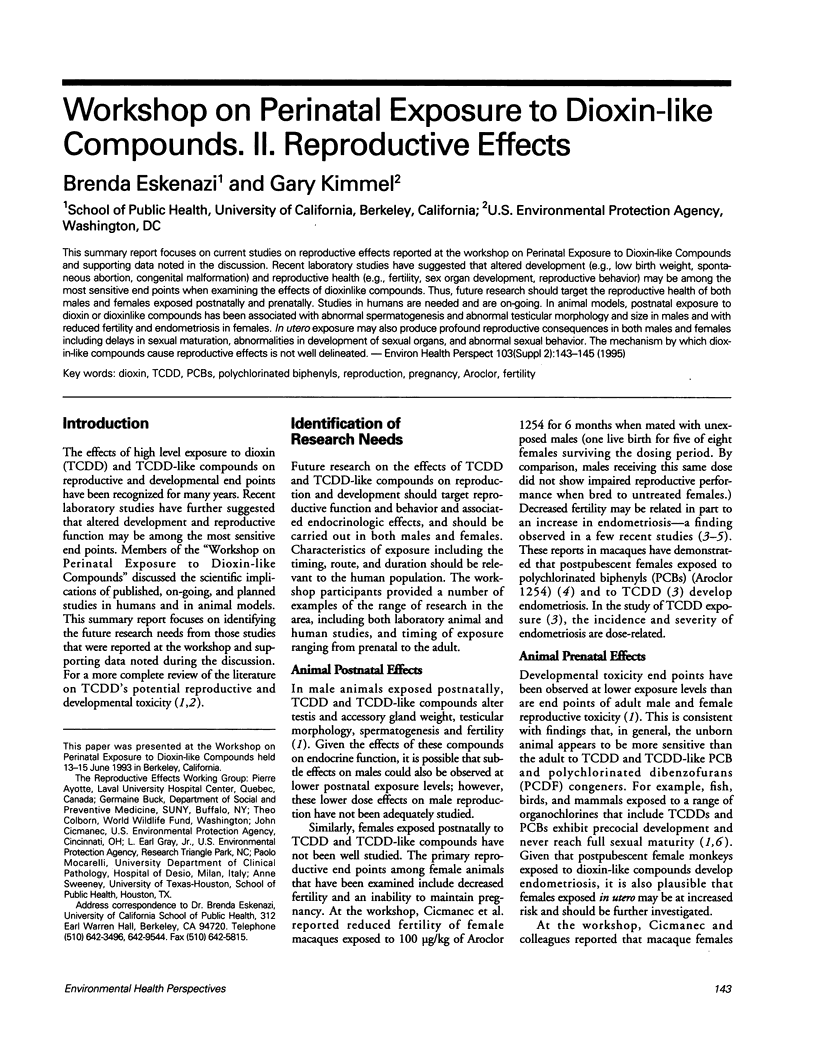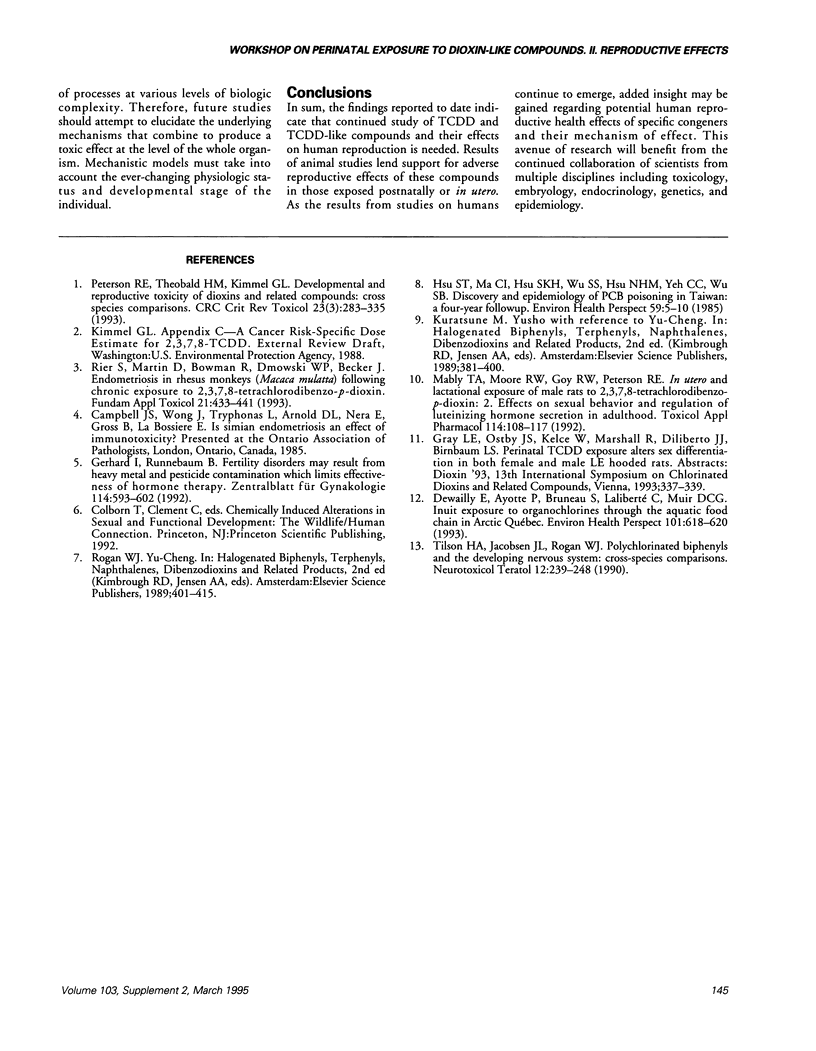Abstract
This summary report focuses on current studies on reproductive effects reported at the workshop on Perinatal Exposure to Dioxin-like Compounds and supporting data noted in the discussion. Recent laboratory studies have suggested that altered development (e.g., low birth weight, spontaneous abortion, congenital malformation) and reproductive health (e.g., fertility, sex organ development, reproductive behavior) may be among the most sensitive end points when examining the effects of dioxinlike compounds. Thus, future research should target the reproductive health of both males and females exposed postnatally and prenatally. Studies in humans are needed and are on-going. In animal models, postnatal exposure to dioxin or dioxinlike compounds has been associated with abnormal spermatogenesis and abnormal testicular morphology and size in males and with reduced fertility and endometriosis in females. In utero exposure may also produce profound reproductive consequences in both males and females including delays in sexual maturation, abnormalities in development of sexual organs, and abnormal sexual behavior. The mechanism by which dioxin-like compounds cause reproductive effects is not well delineated.
Full text
PDF


Selected References
These references are in PubMed. This may not be the complete list of references from this article.
- Dewailly E., Ayotte P., Bruneau S., Laliberté C., Muir D. C., Norstrom R. J. Inuit exposure to organochlorines through the aquatic food chain in arctic québec. Environ Health Perspect. 1993 Dec;101(7):618–620. doi: 10.1289/ehp.93101618. [DOI] [PMC free article] [PubMed] [Google Scholar]
- Hsu S. T., Ma C. I., Hsu S. K., Wu S. S., Hsu N. H., Yeh C. C., Wu S. B. Discovery and epidemiology of PCB poisoning in Taiwan: a four-year followup. Environ Health Perspect. 1985 Feb;59:5–10. doi: 10.1289/ehp.59-1568088. [DOI] [PMC free article] [PubMed] [Google Scholar]
- Mably T. A., Moore R. W., Goy R. W., Peterson R. E. In utero and lactational exposure of male rats to 2,3,7,8-tetrachlorodibenzo-p-dioxin. 2. Effects on sexual behavior and the regulation of luteinizing hormone secretion in adulthood. Toxicol Appl Pharmacol. 1992 May;114(1):108–117. doi: 10.1016/0041-008x(92)90102-x. [DOI] [PubMed] [Google Scholar]
- Peterson R. E., Theobald H. M., Kimmel G. L. Developmental and reproductive toxicity of dioxins and related compounds: cross-species comparisons. Crit Rev Toxicol. 1993;23(3):283–335. doi: 10.3109/10408449309105013. [DOI] [PubMed] [Google Scholar]
- Rier S. E., Martin D. C., Bowman R. E., Dmowski W. P., Becker J. L. Endometriosis in rhesus monkeys (Macaca mulatta) following chronic exposure to 2,3,7,8-tetrachlorodibenzo-p-dioxin. Fundam Appl Toxicol. 1993 Nov;21(4):433–441. doi: 10.1006/faat.1993.1119. [DOI] [PubMed] [Google Scholar]
- Tilson H. A., Jacobson J. L., Rogan W. J. Polychlorinated biphenyls and the developing nervous system: cross-species comparisons. Neurotoxicol Teratol. 1990 May-Jun;12(3):239–248. doi: 10.1016/0892-0362(90)90095-t. [DOI] [PubMed] [Google Scholar]


